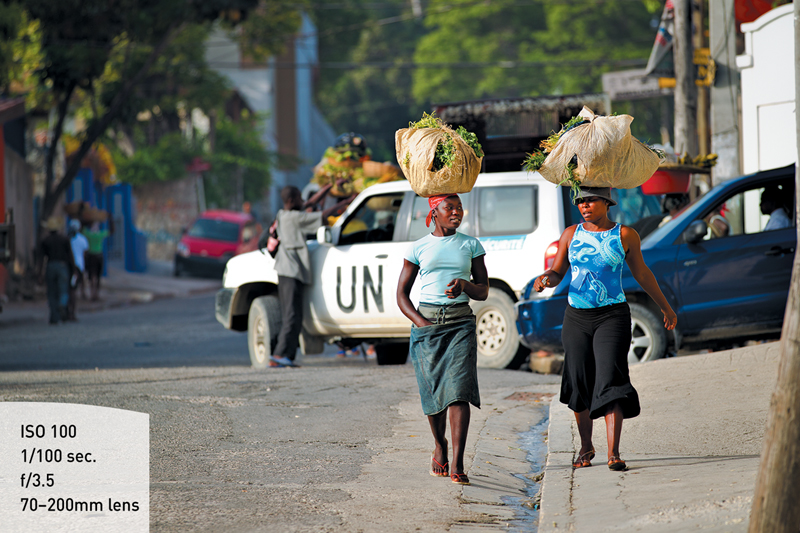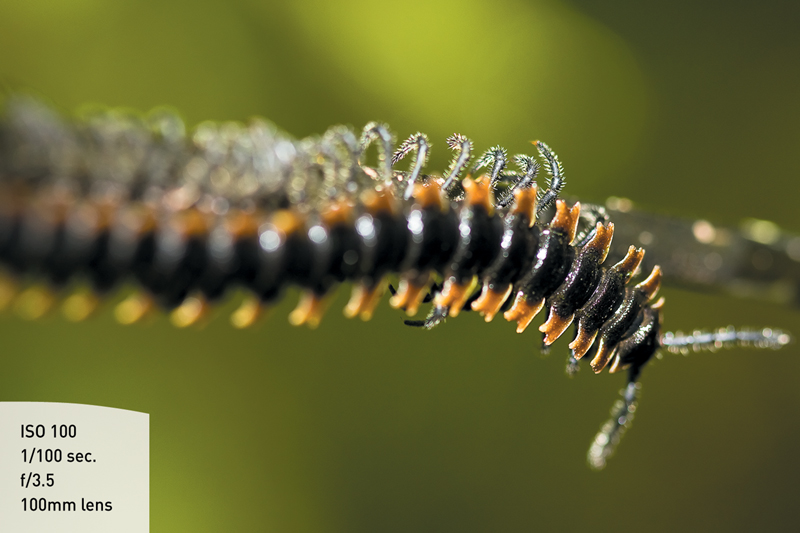Stop Right There!
When you are photographing subjects that are moving fast, the most important setting on your camera is the shutter speed. Choose a fast-enough shutter speed and you will freeze your subject, showing little to no motion blur. Choose a slow-enough shutter speed and you can showcase the motion of your subject by adding motion blur. Understanding the relationship between shutter speed and movement is key when it comes to mastering the concept of motion in photography.
As we discussed in Chapter 2, shutter speed is measured in fractions of a second, so any number you see in your viewfinder or on the LCD is actually a fraction; for example, a shutter speed of 320 is actually 1/320 of a second. There is no single shutter speed setting that will cover all of your needs. The challenge is to learn how to judge a given scene accurately enough to know what shutter speed you should start with. Let’s take a look at the factors that might affect your ability to capture motion.
Direction of Travel
While most photographers tend to focus on how fast a subject is traveling, your focus should instead be on the direction it is traveling. If the subject is moving across your viewfinder, you need a faster shutter speed to keep that lateral movement from being recorded as a streak across your image. Subjects that are moving perpendicular to your shooting location do not move across your viewfinder and appear to be more stationary. This allows you to use a slightly slower shutter speed (Figure 4.1).

Figure 4.1. I was able to use a shutter speed of 1/100 of a second and still freeze these women in mid-step.
Subject Speed
Once you have established the direction that your subject is heading, you need to figure out how fast it is traveling. The faster your subject is moving, the faster your shutter speed will need to be in order to “freeze” that subject (Figure 4.2). A dog walking slowly toward you might require a shutter speed of 1/100 of a second, whereas a soccer player racing across the field might require 1/1000 of a second. Don’t be afraid to use the image playback feature on your 6D. If you find that your shutter speed was too fast or too slow, adjust your settings and try again.

Figure 4.2. I was able to use a relatively slow shutter speed to freeze the movement of the subject down the plant stem.
Subject-to-Camera Distance
The final factor to take into account is the distance between your camera and your subject. Picture yourself looking at a highway full of cars from up in a tall building a quarter of a mile from the road. As you stare down at the traffic moving along at 55 miles per hour, the cars and trucks seem to be slowly moving along the roadway. Now picture yourself standing in the median of that same road as the same traffic flies by at the same rate of speed.
Although the traffic is moving at the same speed, the shorter distance between you and the traffic makes the cars look like they are moving much faster. This is because your field of view is much narrower; therefore, the subjects are not going to present themselves within the frame for the same length of time. The concept of distance applies to the length of your lens as well. If you are using a wide-angle lens, you can probably get away with a slower shutter speed than if you were using a telephoto, which puts you in the heart of the action. It all has to do with your field of view. That telephoto gets you “closer” to the action—and the closer you are, the faster your subject will be moving across your viewfinder (Figure 4.3).

Figure 4.3. Because I was using a telephoto and zooming in on my subject, I used a shutter speed of 1/800 of a second to ensure sharpness and focus.
